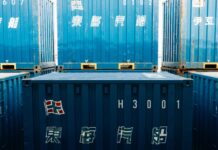
As sustainability becomes a priority, more attention is turning to geomembrane for environmental safeguarding applications. Geomembranes are large impermeable sheets made of materials like polyvinyl chloride (PVC), polyethylene, polypropylene or ethylene propylene diene monomer (EPDM). This emerging technology offers substantial benefits for water conservation, pollution containment and landfill engineering. Understanding the value geomembranes bring illuminates their rising utilization.
Water Conservation
Geomembranes are ideal for lining reservoirs, canals, and ponds. The sheets prevent seepage into groundwater and retain more water at the surface for productive use. This enables improved irrigation efficiency, especially in arid regions. Canal lining also controls erosion and structural deterioration, significantly extending service life. Overall, geomembranes enable smarter water usage.
Wastewater Containment
Lining wastewater lagoons and agricultural slurry impoundments with geomembrane sheets mitigates risks of groundwater contamination. The barriers limit leaching of nutrients like nitrogen and phosphorous into soil and aquifers. Geomembranes also resist damage from UV rays and corrosive chemicals in wastewater. Controlling effluent enhances environmental safety.
Landfill Protection
The greatest volume usage of geomembranes is for landfill liners and caps. The sheets prevent landfill debris and leachate from infiltrating groundwater below or escape into the surrounding environment. Leachate collection systems integrate with geomembrane liners to enable safe treatment. Liners also reduce landfill gas emissions.
Remediation Applications
At brownfield sites and contaminated properties, geomembranes isolate pollution like heavy metals, volatile organic compounds, or petroleum hydrocarbons until remediation is complete. This technique reduces migration into clean soils or groundwater. Covering contamination is cheaper than full removal in some cases.
Saltwater Intrusion Barrier
In coastal zones, subsurface geomembrane sheets function as saltwater intrusion barriers to block saline water from entering freshwater aquifers, with biogas digester. The impermeable lines allow freshwater abstraction while preventing saline intrusion inland. This unique use protects limited drinking water resources.
Durability
Unlike compacted clay and other natural liners, geomembranes are highly resistant to chemicals, acids, oils and temperature swings. Proper installation results in a continuous non-permeable layer with a long service life. Regular inspections help identify and repair any damage that could occur over decades of use.
Reduced Construction Efforts
Compared to compacted clay liners, geomembrane installation is quick and efficient. Large sheets can rapidly cover expansive areas without intensive earthmoving or water needs. This cuts equipment usage, labor, costs and environmental impact. Lining existing sites is achievable with limited disturbance.
Leak Monitoring Capacity
Underlying drainage/leak detection systems can be integrated with geomembranes. Any liquid captured signifies a liner breach before major failures occur. This enables proactive identification and repair of defects to maintain barrier integrity. Regular monitoring ensures performance over time.
Geomembrane technologies enable solving a range of pollution and water security challenges. As sustainability initiatives expand worldwide, expect increasing utilization of these versatile liners for environmental safeguarding and responsible resource management.





